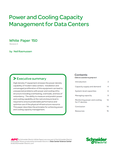The history of the IT hardware industry is littered with attempts to tweak traditional kit and claim it as a fit-for-purpose new solution for emerging requirements.
Remember when private cloud emerged and suddenly the market was awash with so called ‘converged systems.’ Many of these solutions were simply a traditional industry standard server, (a blade or a pizza box) a 2U or 4U HDD storage box and a TOR Switch, sitting within a branded skin wraparound. They were expensive, noisy and ran hot!
Is the same thing happening at the Edge?
Are some big tech players attempting to repackage a collection of existing technologies and define them as new Edge solutions?
There appear to be attempts to do just that. However, pulling together separate processing, storage and networking gear (all of which has been designed for tightly controlled temperature, humidity and clean air environments in data center technical white space or computer rooms) and saying it is fit for Edge deployment is stretching credibility and testing the credulity of customers.
The real issues at the edge are: Physical security and protection, serviceability, energy efficiency, failure risk, environment, humans and noise.
There are without doubt some advances being made in terms of remote monitoring, management and low touch maintenance but simply overlaying this capability onto traditional hardware will not address the harsh operating environments of many Edge deployments.
As customers consider their particular Edge needs, new common challenges are emerging. For example, environmental impact considerations around noise pollution, power management and heat must all be addressed.
With forecasts predicting over half of enterprise IT living outside the traditional data center, sustainability is rising to the top of the Edge agenda.
A forecast model built by Tolaga Research predicts “$146 billion in annual spend on Edge IT and data center infrastructure by 2028, with a 35 percent CAGR and a $700 billion cumulative Capex spend between now and then. The deployed global power footprint of the edge IT and data center facilities is forecast to reach 102,000MW+ by 2028, with 68 percent of the deployments being on the infrastructure edge and 32 percent on the device edge.”
Edge computing at scale must be seen as green. Just as converged systems caused serious hotspot issues within data centers so the cooling implications of placing so much capacity at the Edge must be addressed.
Simply repackaging old technology is not acting responsibility, nor is it taking customers seriously.





